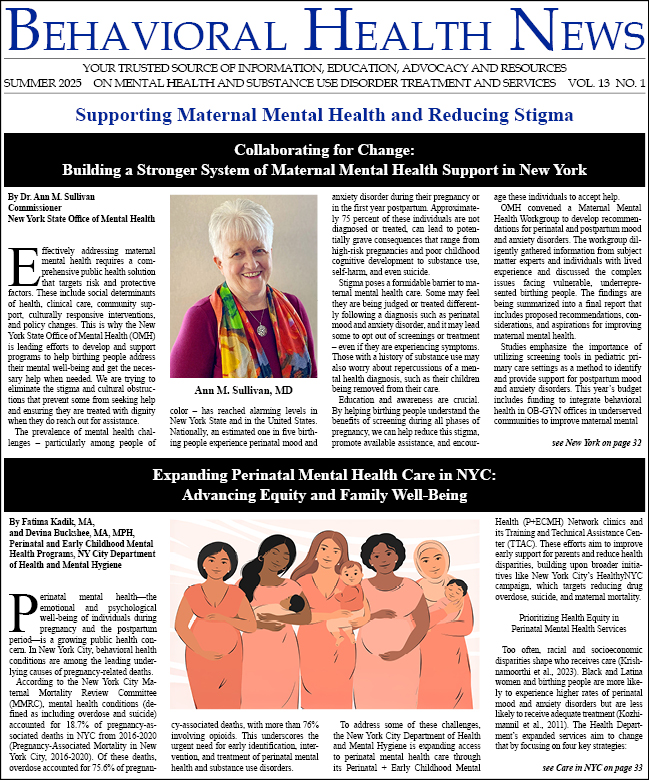-
The Long History and Bright Future of Harm Reduction in New York State
For the past year, the New York State Office of Addiction Services and Supports (OASAS) has implemented a new division among its pillars of prevention, treatment, and recovery services. The newly formed Division of Harm Reduction seeks to bring both the harm reduction philosophy and its practical...
-
Quality Integrated Care is Critical for the Recovery of Individuals with Mental Health and Substance Use Challenges
Integrated care works with the whole person in the world they are experiencing including their physical and behavioral health, as well as past trauma and other social determinants impacting their lives. Individuals with co-occurring disorders, when treated holistically, develop a trusting...
-
Nurturing Healing Within Our Homes: Pathways to Treatment Within the Family
Nature versus nurture has plagued our educational and sociological philosophy for decades in social service and the mental health field. The idea behind treating addiction as a “family disease” has long been established in the understanding that there is a genetic component to addiction and...
-
Empowering Recovery: How Technology Supports Those with Substance Use Disorders
The journey of overcoming substance use disorders (SUD) is multifaceted and often daunting. However, recent technological advancements have proven to be formidable allies in this quest, offering hope and innovative solutions. From the vast capabilities of data analytics to the immediacy of...
-
The Opioid Epidemic: Helping Communities in Crisis
The opioid epidemic has impacted our families, friends, and communities. The New York State Office of Addiction Services and Supports (OASAS) estimates that 1 in 13 New York State residents suffer from a substance abuse disorder.1 Among NYS residents, the number of overdose deaths involving any...
-
An Overview of Family-Based Substance Use Therapy
Historically, individual therapy and group-based treatments have been the predominant modalities used in substance use disorder (SUD) treatment programs. However, there has been increased recognition among researchers, clinicians, and clients of the importance of family structure and how it plays a...
-
Older Adults and Substance Misuse: Hiding in Plain Sight
Last winter “Lucy,” an 87-year-old woman, was referred to Service Program for Older People (SPOP) by her primary care doctor. Lucy’s husband had died during the COVID-19 pandemic, and she was struggling with unresolved grief, depression, and panic attacks. A retired teacher, she had enjoyed a...
-
Consumer Perspectives: Substance Use Treatment and Mental Health
This article is part of a quarterly series giving voice to the perspectives of individuals with lived experiences as they share their opinions on a particular topic. The authors are served by Services for the UnderServed (S:US), a New York City-based nonprofit that is committed to giving every New...
-
Harm Reduction: A Bridge Back to Life
Harm reduction is a decades-long, well-established, effective tool in reducing illnesses, deaths, and other negative consequences of problematic substance use (Jones et al., 2022). This approach has never been more important as in the current overdose crisis (Perera et al., 2022). Harm reduction...
-
The Critical Role of Peer Support Programs to Sustained Substance Use Disorder Recovery
Many people who have used behavioral health services can attest to the profound benefits of connecting with someone with shared experience. Finding others with common lived experience - often referred to as peers - and learning about their challenges and resilience are particularly valuable for...






